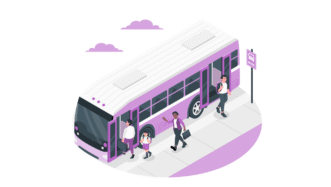LESSON OVERVIEW
The lesson is about online information and digital footprint. Students learn what OSINT (open source intelligence) is, work with useful vocabulary related to online activities, watch a part of a video and have a lot of discussion.
WARM-UP & VOCABULARY
The lesson starts with a warm-up activity. Students look at the list of activities (e.g. share your home address, tag your friends in posts, etc.) and say which of them they would never do online. Students also have to explain their reasons. After that, students read some statements related to online activities and information and agree or disagree with them. The statements contain some useful vocabulary (e.g. digital footprint, intelligence, consent, etc.) that teachers can ask students to define. Then, students work with more vocabulary. First, the match the sentence halves. After matching, they look at the sentences and try to find verbs to match the provided definitions.
VIDEO & DISCUSSION
In this part of the lesson, students watch two sections of the video (4 mins, in total) and discuss it. First, they look at the sentences they created in the previous activity and try to guess who they are about. Then, they watch the first part of the video (to 00:53) and check their answers. Students watch the second part of the video (00:53-03:51) to define what OSINT is. Then, they watch it again to summarise what the organisation from the video does. After that, students discuss OSINT, different online activities, security and information. Students also talk about OSINT and its techniques in detail in the next activity. They look at the list of things (e.g. social media, online maps, publicly available databases, etc.) and brainstorm how OSINT experts can use them. They also practise using the vocabulary from the lesson while doing so. As the final activity, students choose one of two cases and discuss how to use OSINT to tackle it.
HOMEWORK/REVISION
This lesson plan also includes an additional task that you can use as homework or revision. In the task, students revise the vocabulary they learned in the lesson. The task is available in the teacher’s version of the worksheet. You can print it, cut it up and hand it out to your students. It’s also included in the e-lesson plan.
Subscribe to unlock these and many other Standalone lesson lesson plans with the Unlimited planWORKSHEETS














Thank you so much for this class! I have many students in this area and it’s really hard to find materials of these topics.
I’m happy you find this lesson useful 🙂
In this lesson, on the slide 12, personally it does’t make much sence to ask so many questions where the answer is: ‘Peopole who do online investiagation’. It alter the focus becuase in the first part of the video nothing was mention that could be connected to the questions.
On slide 18, the answers merge unrelatedly. Watching the first part of the video that insinuates something about the missing man or captures the students’ interest in the end of the story leaves me in suspense. Unfortunately, you didn’t use the third part of the video. Altogether, the video and the slides before and after don’t seem to align cohesively.
I’m sorry to hear you didn’t like the activities. I’m not sure we’re going to introduce any changes at this point, but I can share my perspective on how to approach the tasks 🙂 As for slide 12, you don’t have to ask students to comment on each statement separately but make them read all the statements together and decide who ‘they’ are. Slide 18 presents only a possible summary of what they do at Trace Labs, so students can come up with their own version. Finally, the point of the video was to introduce the idea behind OSINT and illustrate what people can do with it. That’s why we felt the third part of the video doesn’t add much value. But you can always let students watch it till the end at home or in class if time allows.
Hello! I just wanted to let you know that we have updated the rubric in ex.5/slide 12 so that it’s clearer.